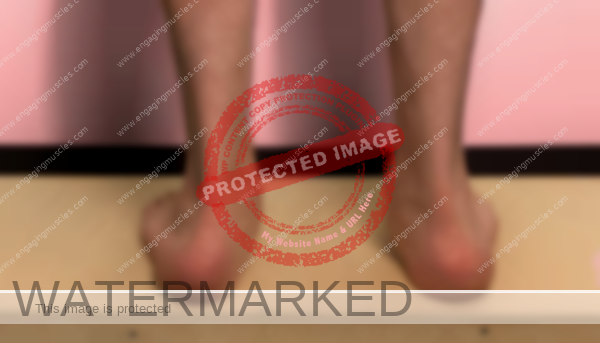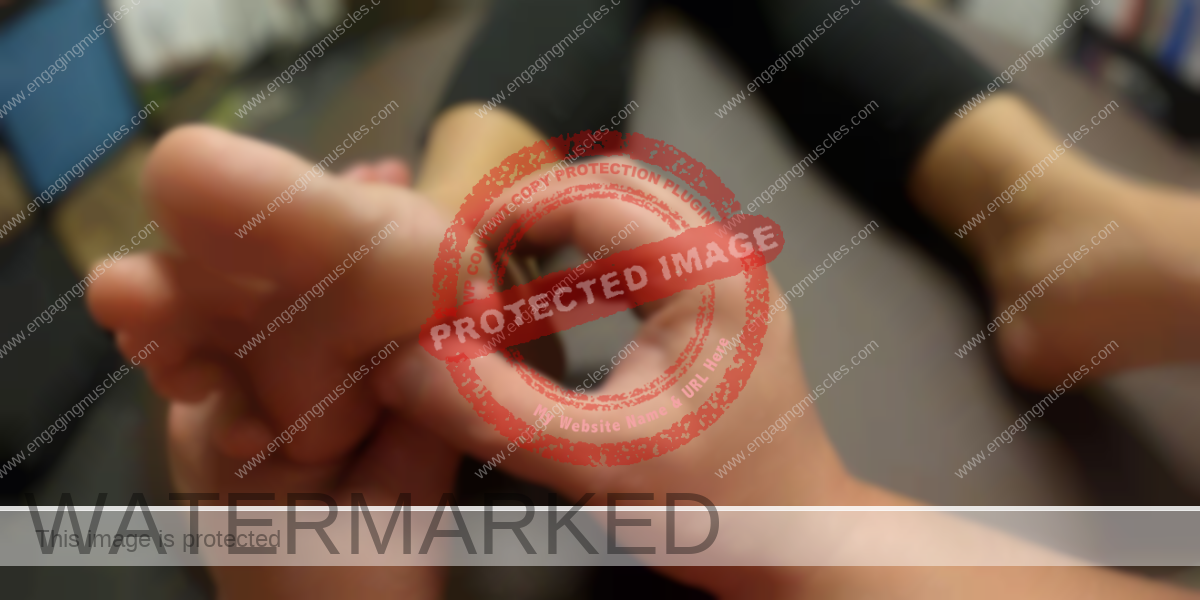The first of many inconvenient truths that surround the subject of plantar fasciitis is that muscles throughout your hips and trunk contribute to the timing at which your feet decelerate and accelerate motion.
To say the same thing in a slightly different way, muscles throughout your hips and trunk contribute to how well your feet pronate and supinate.

If you are someone who hasn’t been able to return to activities you enjoyed before plantar fasciitis took hold, I’m willing to bet an expert hasn’t informed you that muscles far from your feet contribute to how efficiently your feet punch the ground.
Stability from above also allows your feet to absorb the punch that the ground is bringing on every step.
One major benefit of having muscles that are capable of providing stability throughout your hips and trunk is that your weight will be distributed across your feet more evenly.
The suspension bridge analogy I used in Foot Orthotic Enthusiasts Chase Symptoms applies here.
For decades, all sorts of stuff have been thrown at symptoms.
Addressing symptoms has to stop.
One example that remains popular is the often-repeated recommendation to roll your foot out with a frozen water bottle. Or even worse, a lacrosse ball. It’s advice that can be seen in a magazine.
Colorful kinesiology tape that research has repeatedly shown to be a placebo is also regularly thrown into the mix.
Close to 75% of your muscles attach to your pelvis.
Most of those muscles are bigger and stronger than the muscles that are directly responsible for moving your feet.
To give you an idea of how far-reaching muscles that attach to your pelvis are, you have muscles that go from your pelvis and attach to a variety of places along the length of your thigh. You also have muscles that go from your pelvis and attach to your lower leg.
Above your pelvis are muscles that go from your spine and/or rib cage and back to attach to your pelvis.
You even have one muscle that attaches your pelvis to your arm, i.e., latissimus dorsi (a.k.a., Your lat.)
The second inconvenient truth
If you were to seek help for plantar fasciitis today, close to 75% of the muscles that attach to your pelvis will be ignored. In other words, before doing what has always been done, there’s no thought as to how well muscles throughout your hips and trunk are functioning.
The third inconvenient truth
When you have stability throughout all the joints that allow for motion of your pelvis, you will also have more mobility and stability throughout your feet.

No matter how much arch height you have in a static posture, you want muscles throughout your hips and trunk to be capable of pulling (read: generating tension) in such a way as to evenly distribute weight across your feet.
The fourth inconvenient truth
While increasing mobility continues to be what’s popular, the truth is any increase in mobility isn’t going to hold until your brain recognizes stability.
What you just read is the reason WHY many people who seek help for plantar fasciitis continue to have the same symptoms.
Recently, I saw a slide from a presentation on plantar fasciitis. The first line on the slide caught my eye. It was taken from a study on chronic plantar fasciitis.
Here’s how it read, 45.6% [who participated in the study] were still symptomatic 10 years after the debut of symptoms
Because there continues to be so much focus on your foot, I wasn’t surprised to see that stat.
The fifth inconvenient truth
When you get to the point of experiencing pain in your foot, it’s often the result of having a base of support that’s been forced to take on more of the workload than the muscles throughout your feet can tolerate.
What you just read is another reason WHY plantar fasciitis tends to settle in for so long.
When you don’t know what you don’t know, there’s a lot that’s hidden in the complexity and far-reaching pull of what conventional wisdom says is important.
The truth is plantar fasciitis is rarely about the pain you feel in your foot.
And yet, plantar fasciitis is a big enough challenge that there are over 17,000 members who voluntarily joined a support group on Facebook.
The sixth inconvenient truth
While everybody and their uncle chase the pain you feel in your foot, what they aren’t letting you in on is that they have become accustomed to throwing a bunch of stuff at symptoms. And then, hoping that something sticks.
“Faking it can be a very bad strategy because when you fool others you can end up fooling yourself.”
— Eric Barker, Author of Barking Up The Wrong Tree
Case in point, when you express concern about feeling tightness throughout the back of your calf – stretching is what’s recommended.
The seventh inconvenient truth
Tight muscles aren’t the enemy. Far from it. Muscles that feel tight are doing their best to protect you from experiencing more pain or injury.
Stretching goes against what your brain has figured out for you.
Imagine what life without a focus on tight muscles would look like. If the idea that tight muscles aren’t the enemy was to spread, labs for assisted stretching wouldn’t exist.
Foam rolls that come in all shapes and sizes wouldn’t be seen as being useful.
We can only hope that all the force that’s delivered during a deep tissue massage would be acknowledged for all that it isn’t.
Then there’s the fancy sock that holds your foot in a position (and direction) at night. While the sock might feel like it’s alleviating symptoms, it’s more than likely adding insult to injury.
(Principles)
The sock is only pulling in one direction. That’s where it fails to deliver. This is due to the fact that when your foot’s on the ground, your calf is pulling in three directions.
The sock isn’t capable of preparing your calf musculature to absorb the punch that the ground is bringing on every step.
When none of the attempts at chasing pain and addressing symptoms deliver on what was promised, pricey foot orthoses that force your foot away from the area where you feel pain is what’s recommended.
(Priorities)
This without any regard for the function of your foot that doesn’t have any pain to speak of. 🧐
The eighth inconvenient truth
Foot orthotics force function and throw off the timing at which your joints pronate and supinate. The end result is that your knees, hips, and back are forced to take on more of the shock that your feet are unable to absorb.
When you recognize all the randomness and complexity that goes along with plantar fasciitis a pattern emerges.
The ninth inconvenient truth
The way in which plantar fasciitis continues to be addressed fits a certain business model.
SHIP.
(Art)
Can’t get to Dallas? Get details on how you can work with me from home.
Thanks for taking the time to read this post! If you enjoyed this post, please subscribe to Engaging Muscles. You can also like Engaging Muscles on Facebook, subscribe to my YouTube Channel, or feel free to connect with me on Twitter @rickmerriam.
Book mentioned:
Barking Up The Wrong Tree by Eric Barker (affiliate link)
Photography Credits:
Photo credit: The Shoes Make the Man via photopin (license)

